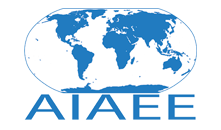Keywords
Technology adoption, Conservation Agriculture, social networks, East Africa, innovation diffusion
Abstract
Previous studies have shown that there is not one universal set of factors that contribute to smallholder farmers' adoption of Conservation Agriculture. However, network influences at the local and regional levels play a key role in innovation and technology diffusion. A major challenge in research dedicated to measuring these influences is representing farmer network structure. Mixed methods baseline and endline surveys on adoption of Conservation Agriculture and farmer information sources were carried out in 2010 and 2014 in Molo, Uganda (n=92), Kween, Uganda (n=94), and Kitale, Kenya (n=65). Network structure is explored at multiple levels: the meso-level, where agents serve as sources of vertical knowledge; and the micro level, where farmers spread new technologies horizontally, often through involvement in farmer groups and associations, and integrate them into existing local knowledge. The survey results indicate that farmers understood the three principles of Conservation Agriculture as independent concepts and that crop rotation is widespread. Adoption of minimum tillage increased significantly (p < 0.01) in the Ugandan sites, and knowledge of minimum tillage increased significantly in all research sites.
Rights Statements
This Item is protected by copyright and/or related rights. You are free to use this Item in any way that is permitted by the copyright and related rights legislation that applies to your use. For other uses you need to obtain permission from the rights-holder(s).
Recommended Citation
Gunter, J.,
Moore, K. M.,
Eubank, S.,
&
Tino, G.
(2017).
Agricultural Information Networks and Adoption of Conservation Agriculture in East Africa.
Journal of International Agricultural and Extension Education, 24(1), 90-104.
DOI: https://doi.org/10.5191/jiaee.2016.241109



